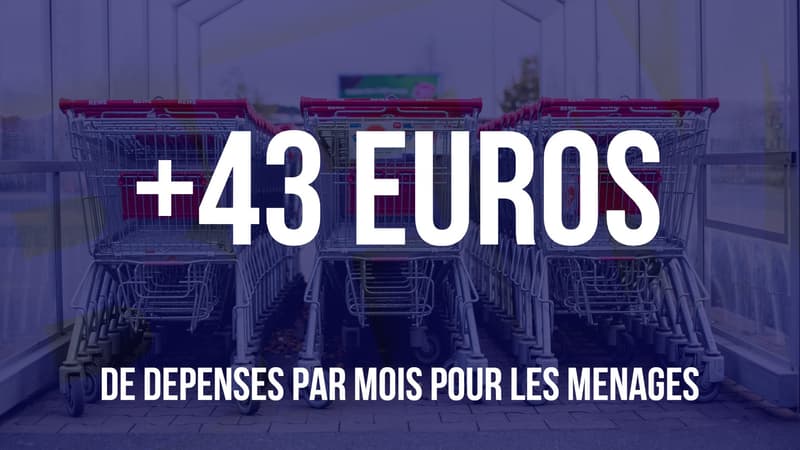There are delays that one would never want to recover. Less affected than most of its neighbors by inflation, France may be catching up. In supermarkets, the rise in food prices continued in September according to NielsenIQ, reaching 7.59% compared to the same month in 2021.
It is followed by increases of 6.61% in August and 5.68% in July. The panelist is now considering a price increase that could reach 10% in December. In the consumer sector, therefore, it does not seem that the peak of inflation has been reached.
“Inflation is now the number 1 concern for the French, far ahead of the weather, the war in Ukraine or even Covid, says Xavier Ségalié, CEO of NielsenIQ France.
An average that hides a diversity of cases. Thus, now there are 12 million French households that say they are weakened by rising prices, or 41% of them. An increase of 7 million households in just one year.
One billion fewer products compared to 2020
Households that arbitrate by cutting their expenses. After the debut of l’année, the chiffre d’affaires des non-alimentaires products (skills, electroménager…) fell by 1.7% and celui des produits frais (legumes, boucherie, poissonnerie) fell by 1.4% total. Only the consumer goods segment rose (+1.6%) but this was due exclusively to the rise in prices (+3.3% in these departments). Volumes of purchased products fell 1.7%.
In detail, the butcher shop is at -10.6%, the fish shop at -6.8%, the cheese shop at -6.3%. Fruits and vegetables (-3.7%) and cold meats (-3%) held up a little better, but also fell.
A phenomenon of consumption that can be found in all departments. Since the beginning of the year, the French have bought 29 billion units of products in supermarkets, compared to 29.4 billion at the same time in 2021 and even close to 30 billion in 2020.
That said, in terms of volume, this level is still higher than it was before the crisis. In 2019, 28.5 billion products were sold during the period.
“Summer was good from a tourist point of view, telecommuting is much more important than in 2019… The number of units sold should have been higher. Indeed, there is an effect of non-consumption linked to inflation,” he continued.
Ever higher selling points
An underconsumption that is mainly the fact of families (-5.1%) and those under 50 without children (-2.2%). On the other hand, the older ones don’t seem so limited. Those over 50 years of age without dependent children increased their purchasing volume by 2.8%.
As for distribution channels, it is surprising that proximity prevails, small stores tend to be more expensive and more subject to inflation. But the development of teleworking and buying in smaller quantities is profitable for them. Revenue from this circuit has increased by 5.9% since the beginning of the year. Far ahead of hypermarkets (+2.3%) and discount brands (+1.6%).
As for the specialized brands, it is the organic that knows. 24% of French people say they visited an organic store in 2022, compared to 27% in 2019. If fresh and frozen stores are doing well and increasing their attendance, it’s the Action, B&M or discount type stores. Gifi the ones that are a success. . 69% of French people say they have visited a discount store in 2022, 7 points more than before the Covid crisis.
Source: BFM TV


